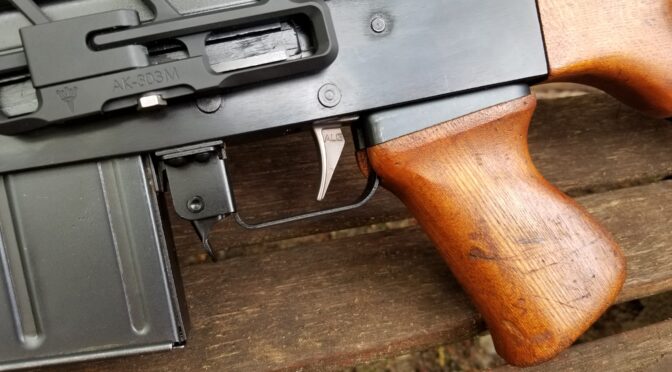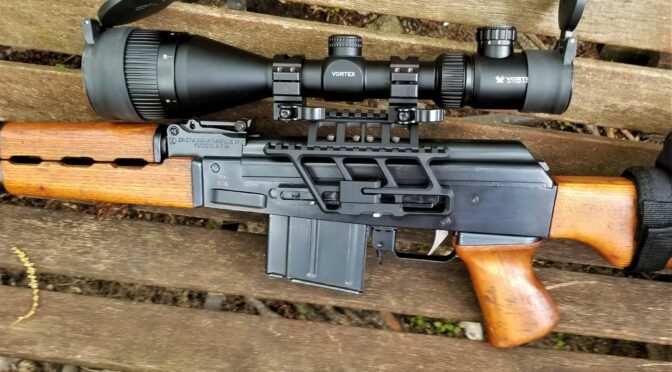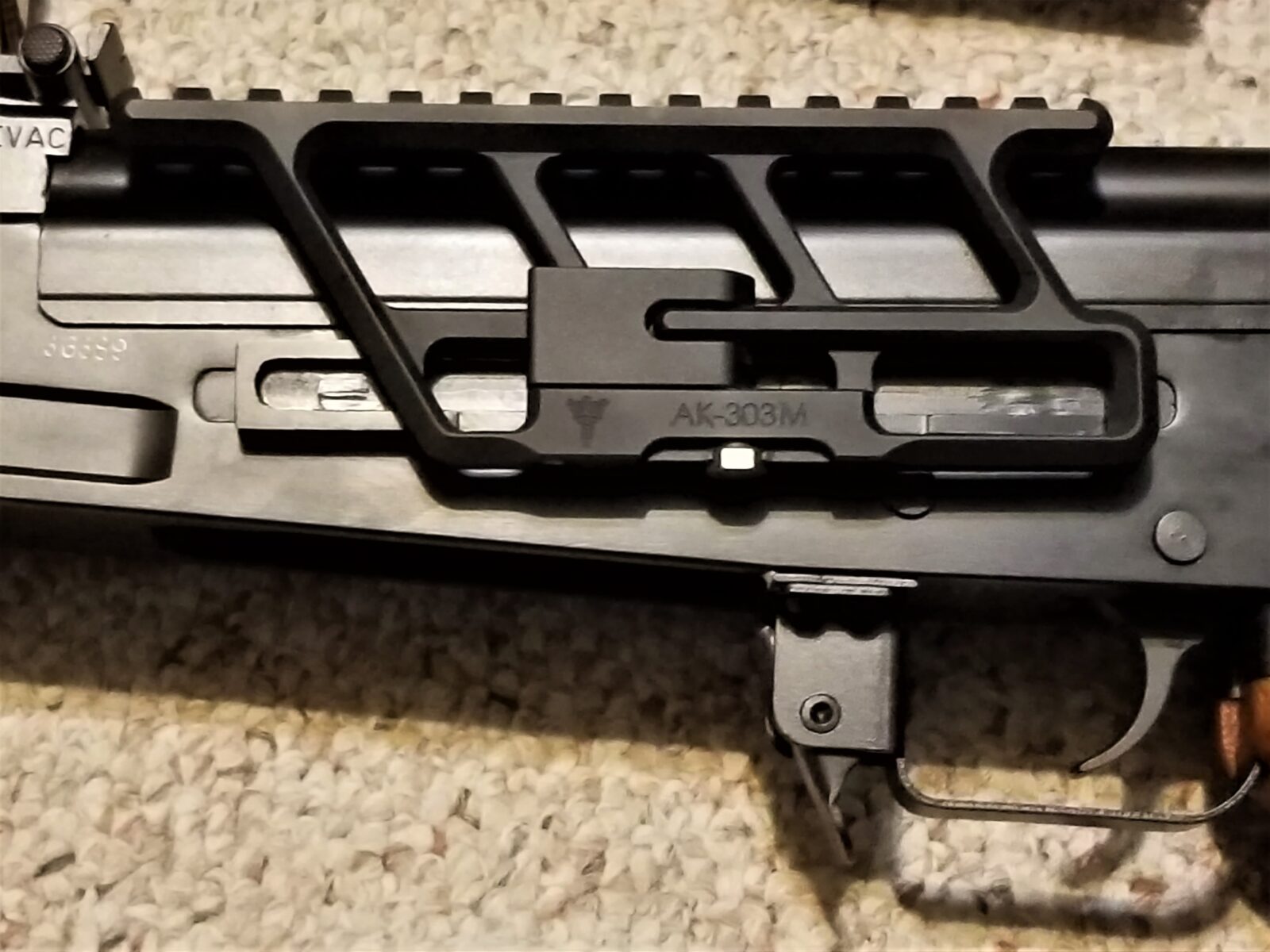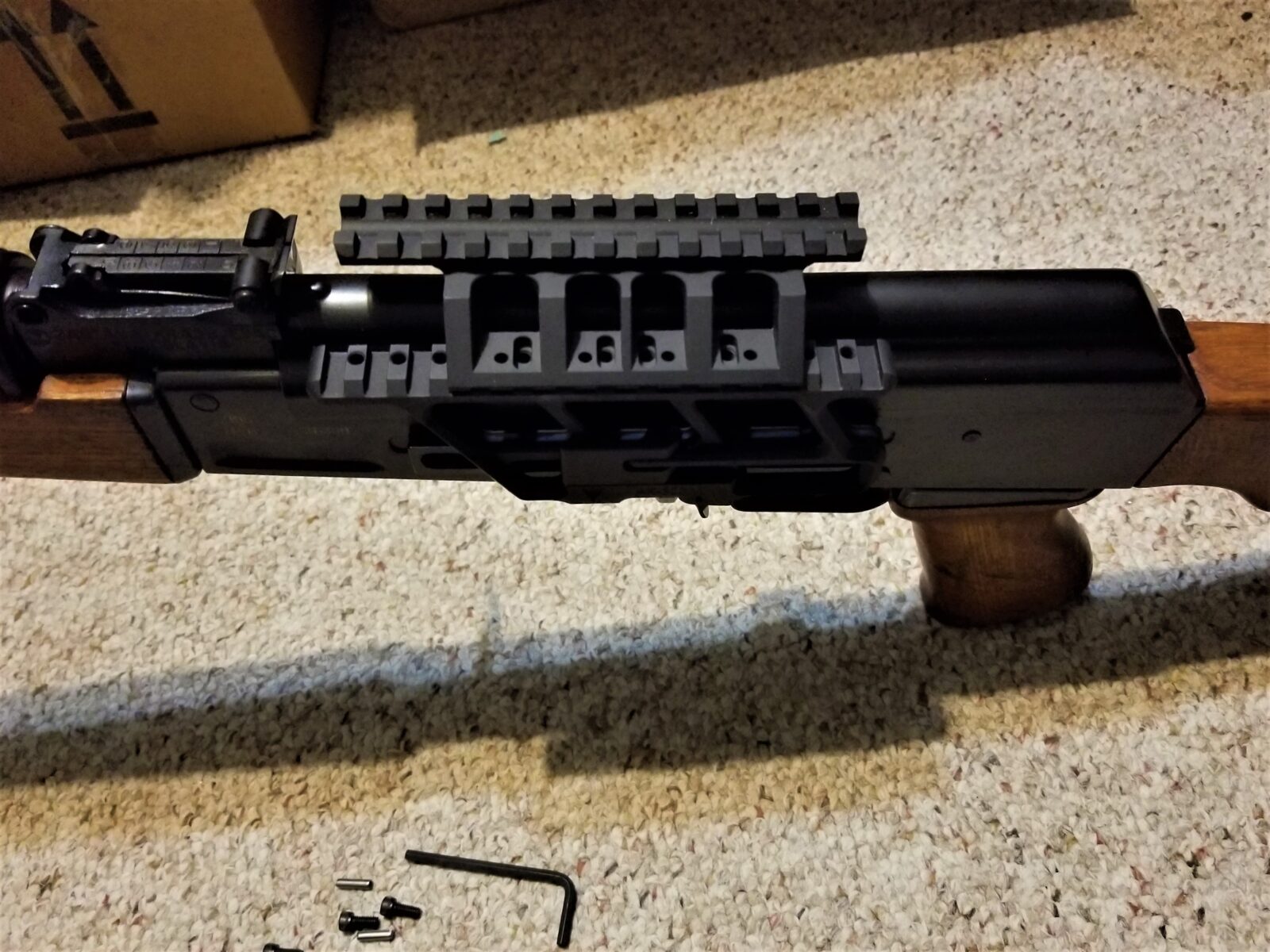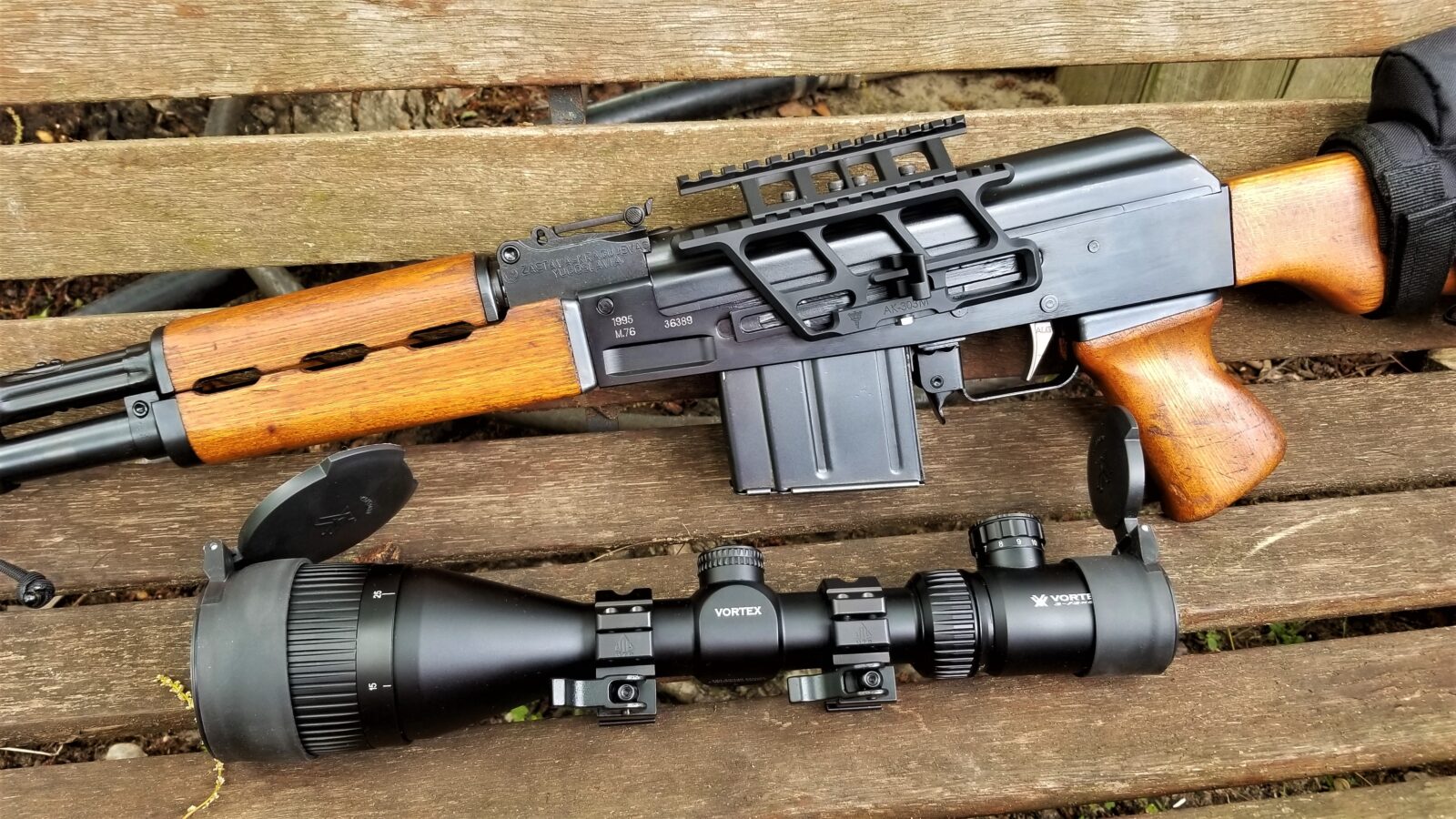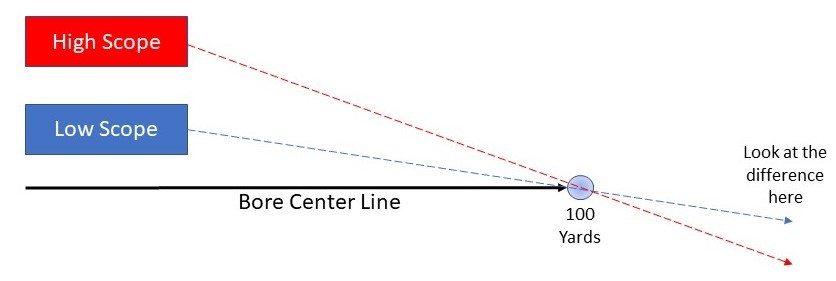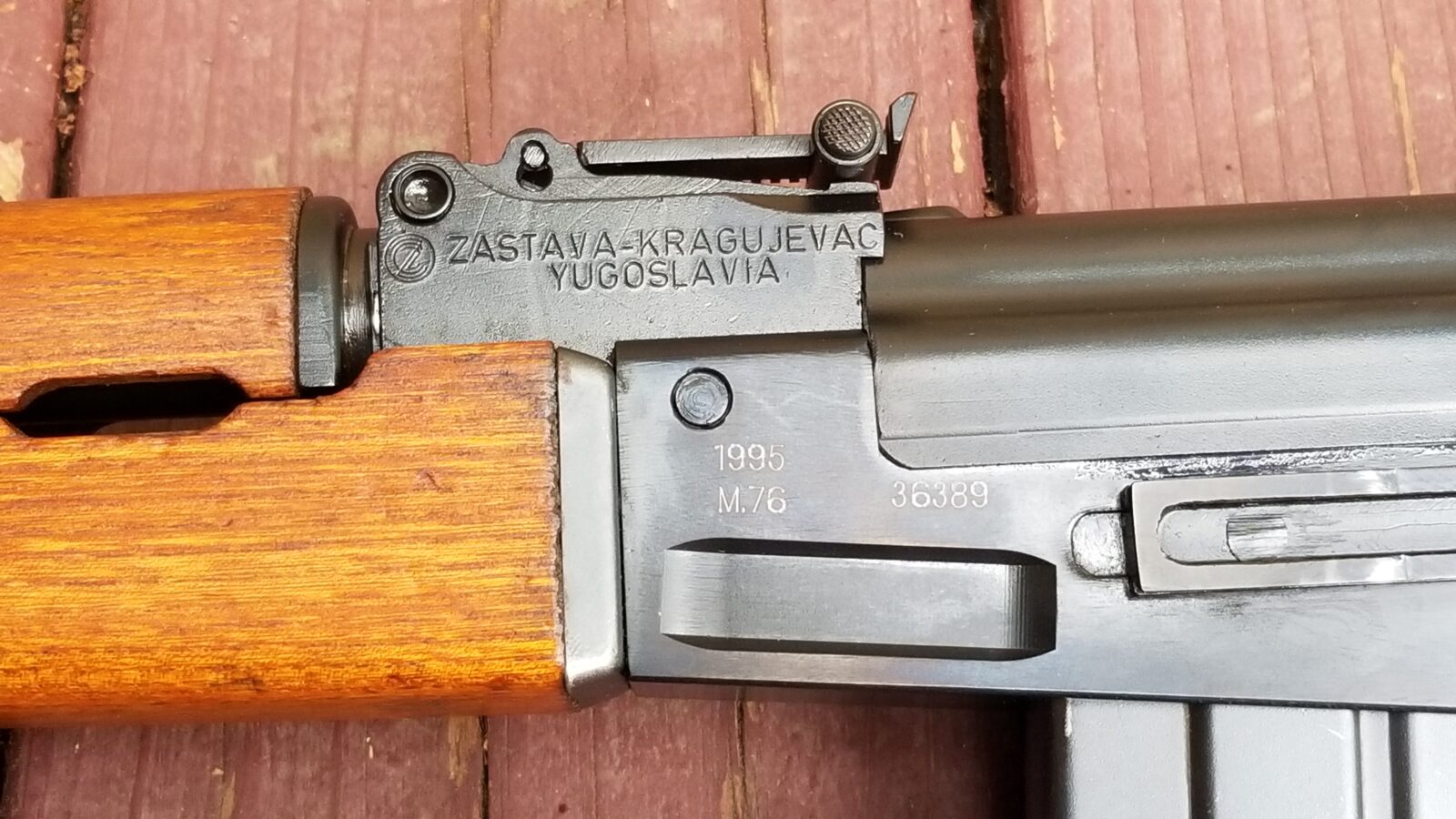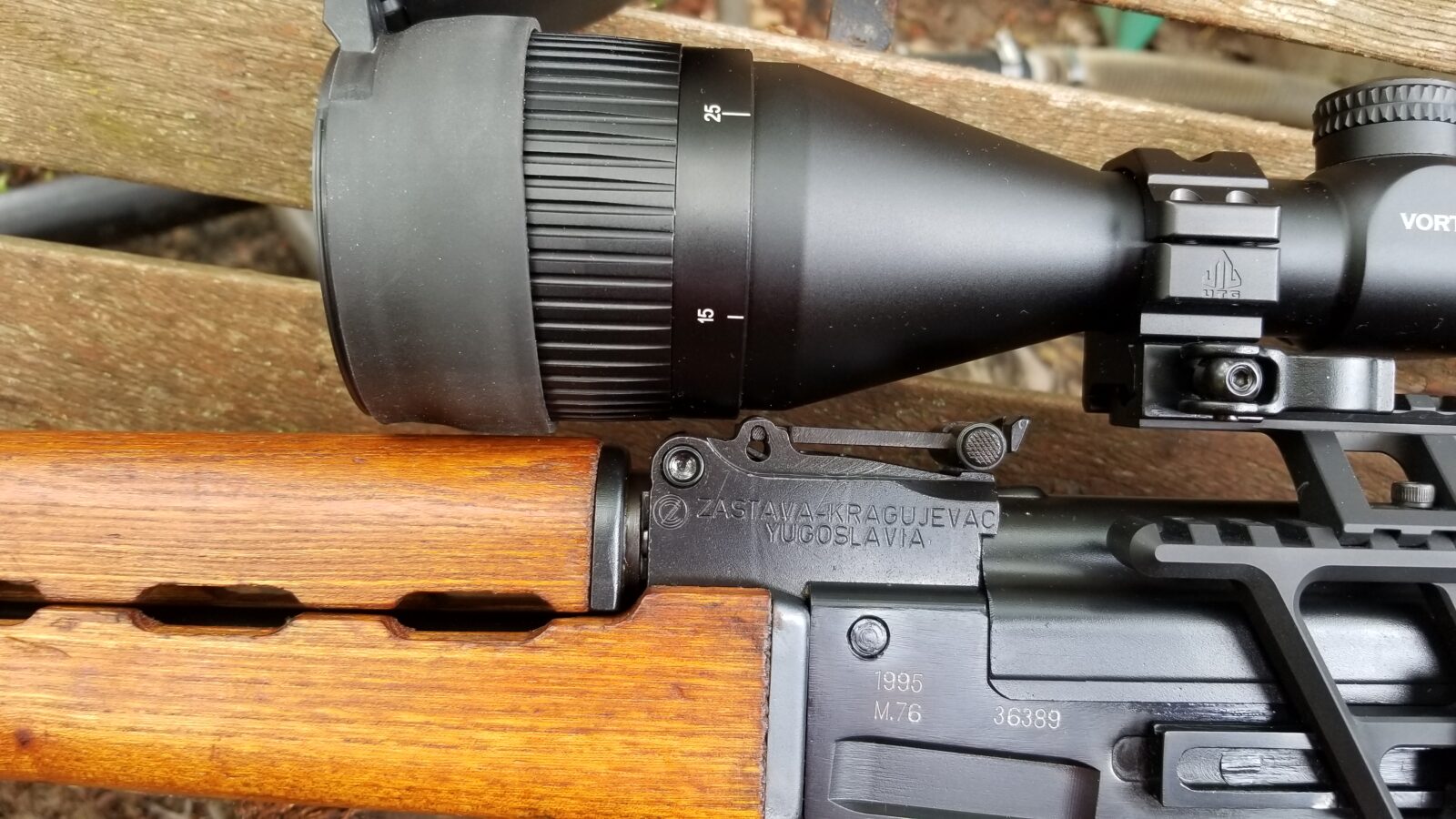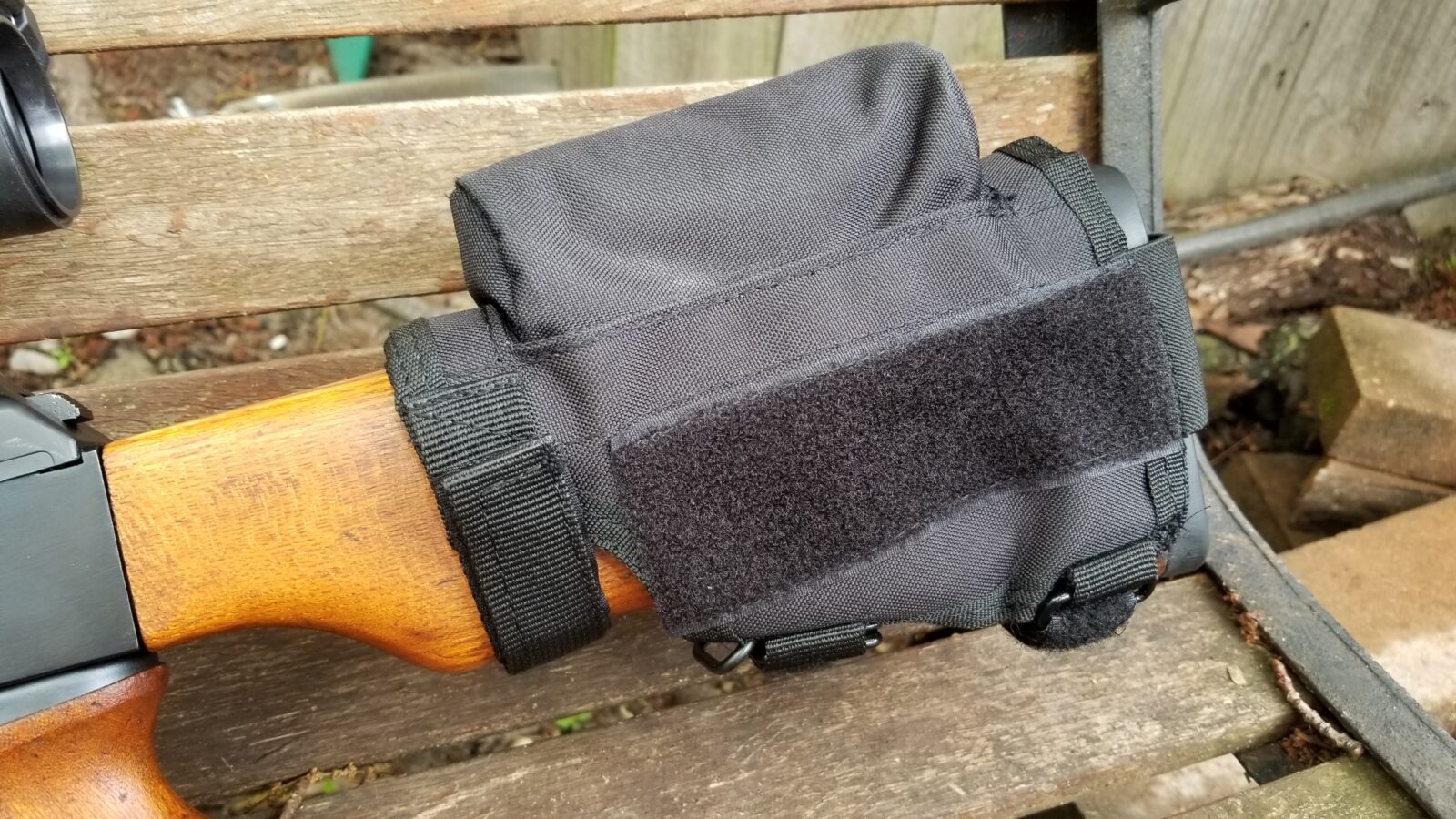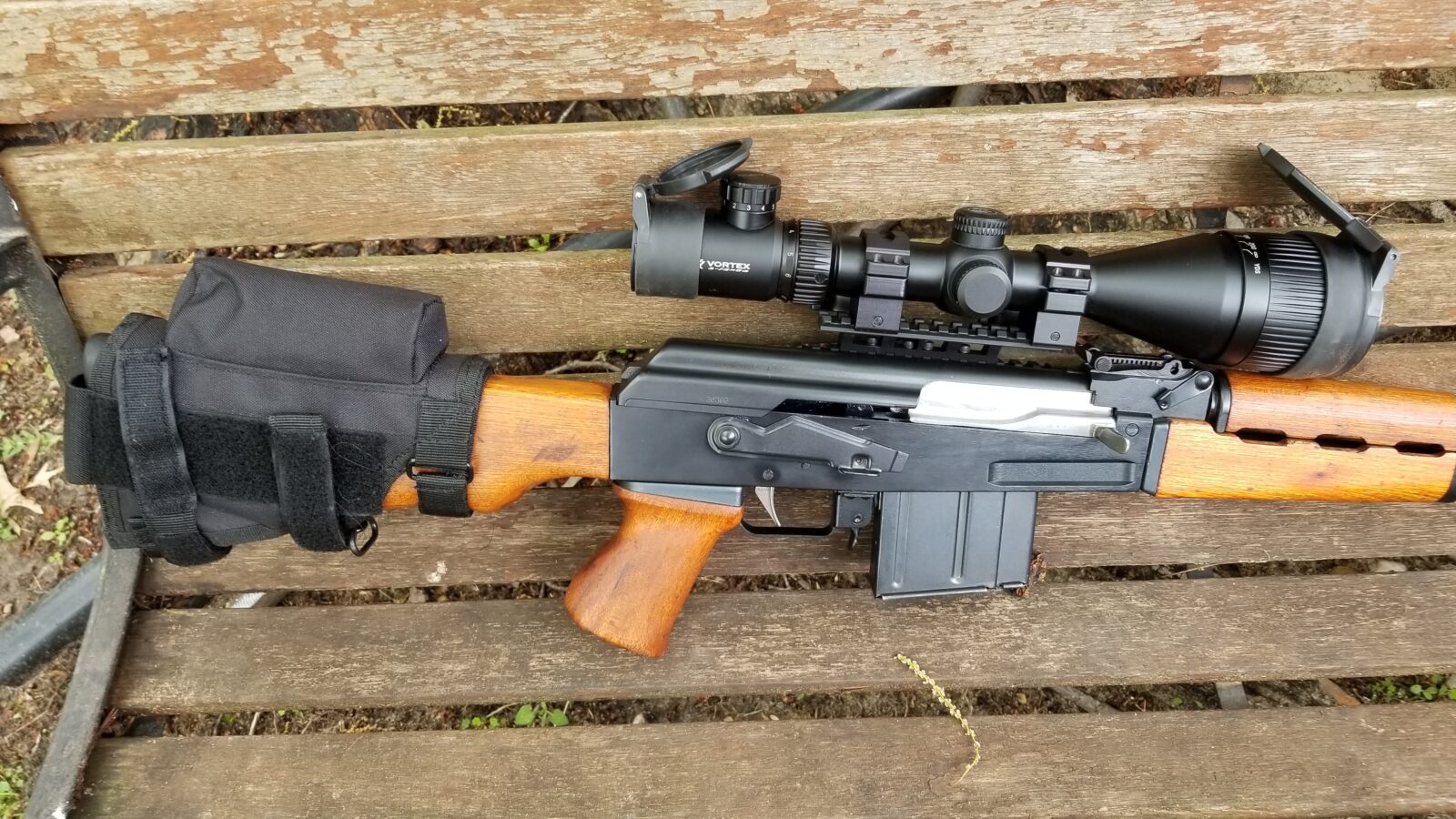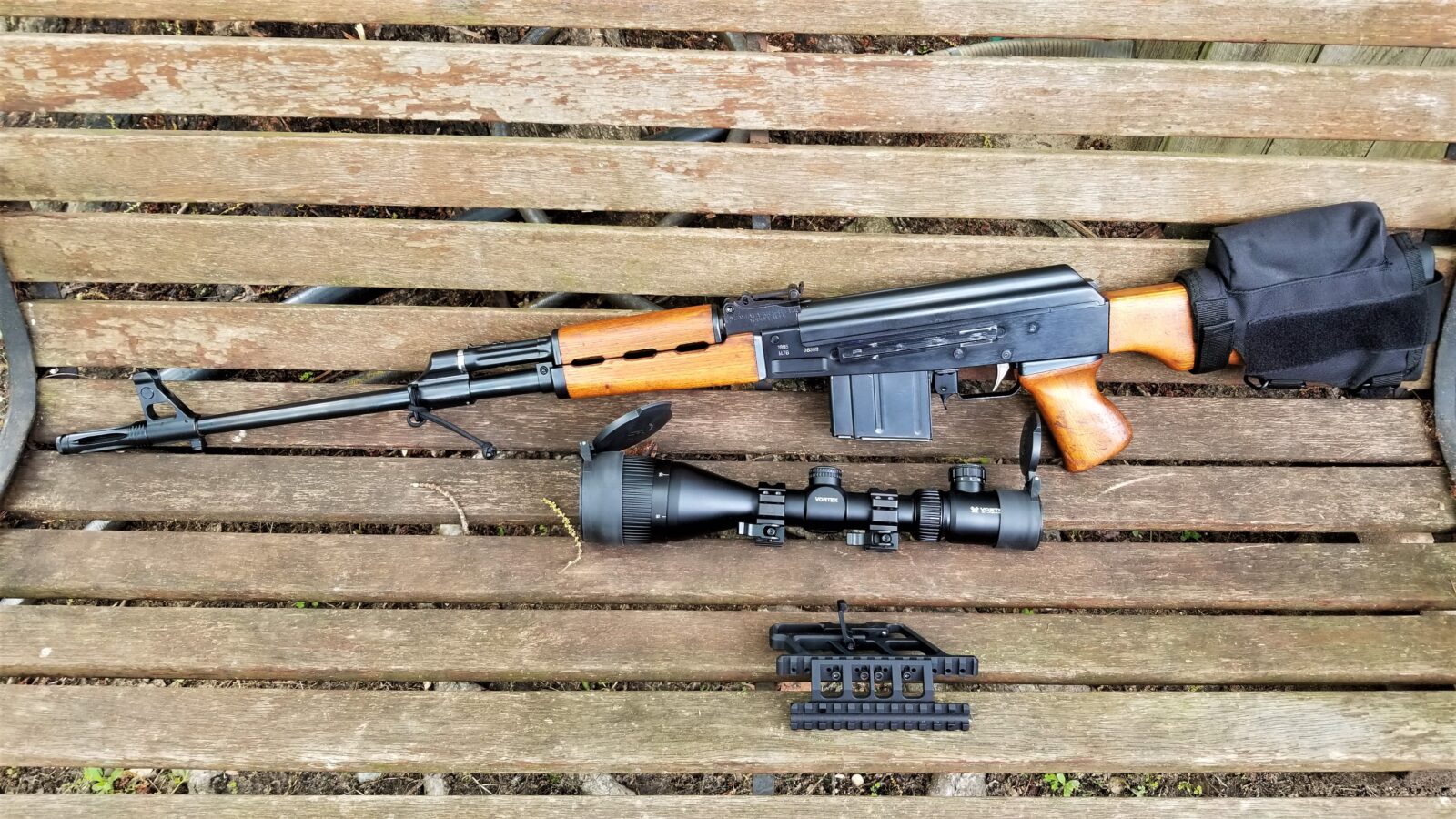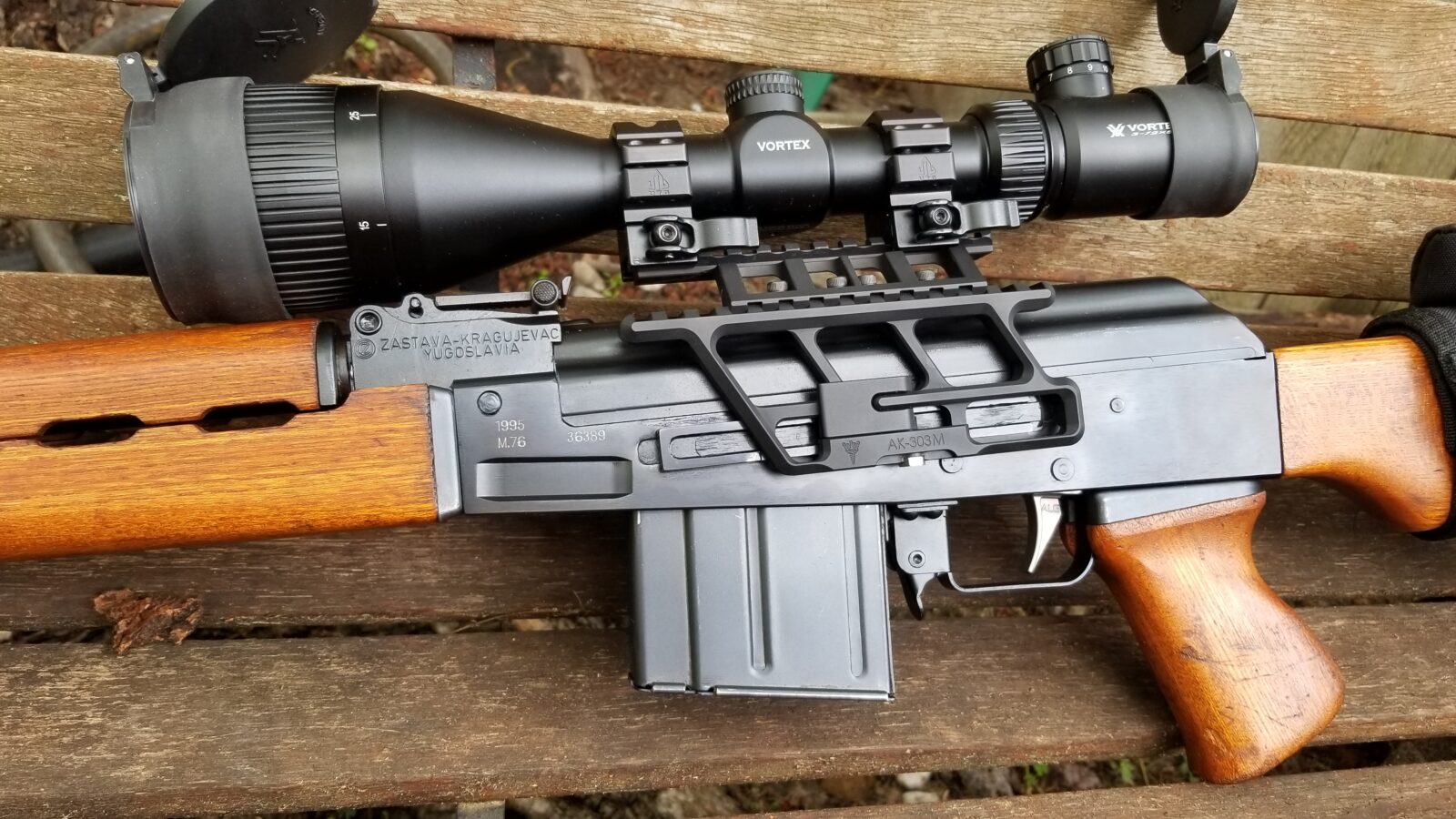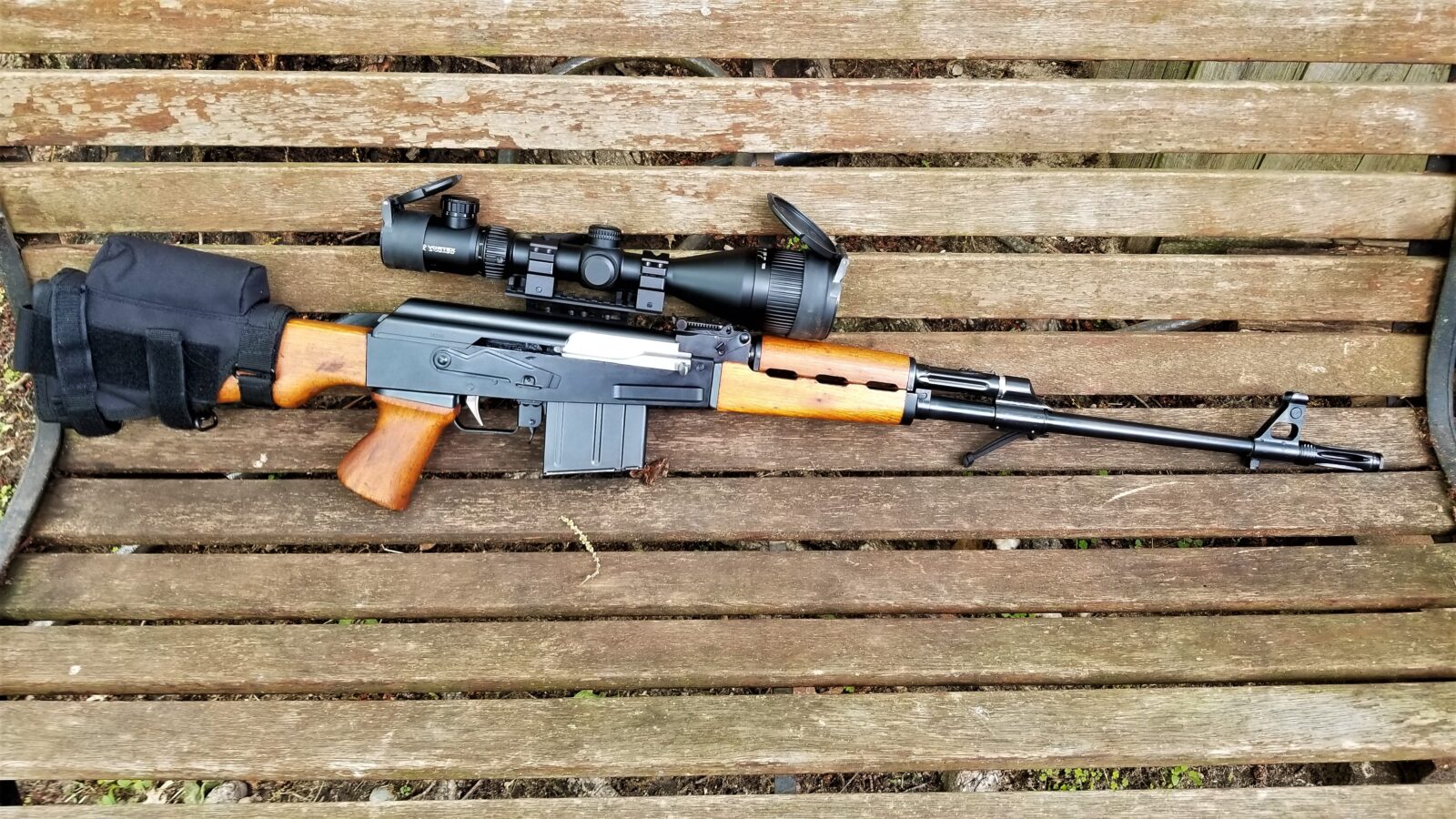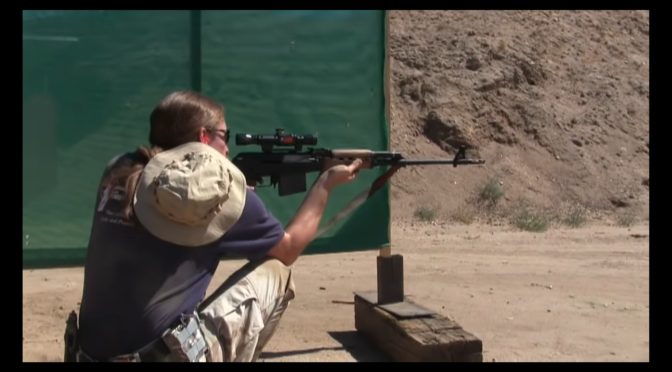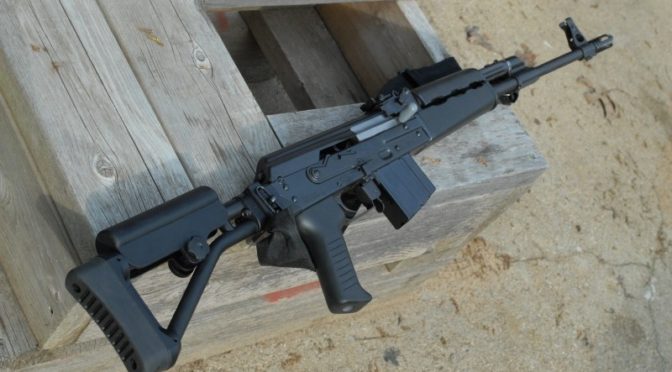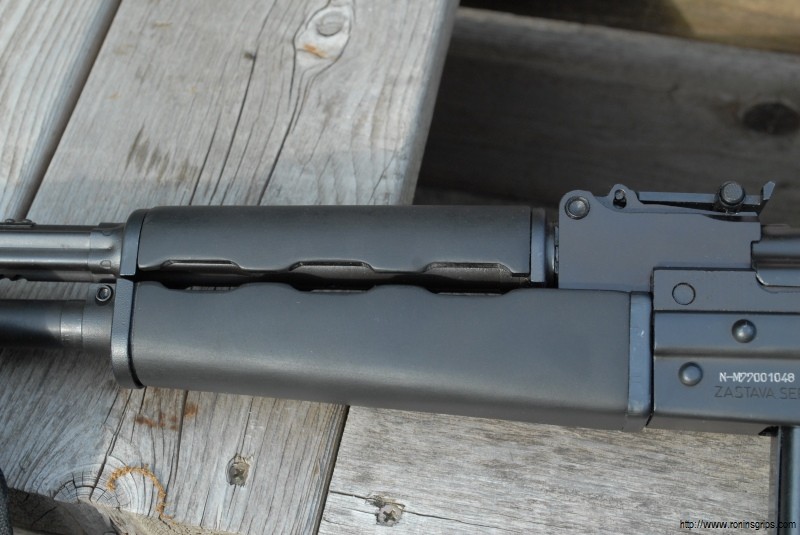When I sent the M76 to Two Rivers Arms to build, I was still using Tapco G2 triggers in my AK builds. Since then, I have moved to ALG Defense’s AK Trigger Ultimate With Lightning Bow (AKT-UL) for anything I’ve built in the last two years. Folks, these are wicked triggers and absolutely hands down my favorite AK triggers.

Not only does the AKT-UL give you three compliance parts as it includes the hammer, trigger and disconnector but the feel is amazing. Now if you know how to tune a G2 trigger, you are used to having a fairly decent AK trigger. The AKT-UL units step it up a notch for sure. ALG does have a shorter and more crisp pull for sure plus they will tell you the trigger has about a 3.5 pound pull which you can tweak a bit by bending the hammer spring.
I got out my Lyman digital trigger gauge and did 20 pulls. The average was 3 pounds 13 ounces and the nice wide trigger shoe makes it feel less.

Installation Notes
Safety First Always – Make Sure Your Weapon Is Unloaded! Always assume a weapon is loaded until you confirm it is not. Keep ammo away from your work area and don’t test fit with live ammunition.
Second – read their instructions – they work and you have options. This is not one of those cases where the instructions suck – they are actually quite good. The come with the trigger plus ALG makes them available online – click here to read the instructions for both the Enhanced (EL) and Ultimate (UL) triggers.
I really don’t have any surprises to report. It installed the same as any other AK fire control group and I didn’t need to use any pins and I certainly didn’t want a heavier pull so I didn’t use the auxiliary trigger spring either:
1. Install the hammer with the ears to the rear and spring around the back of the hammer. If it fights you during installation and the little legs that sit on the trigger are facing down, odds are you have the spring installed right. I lubricated all pins with Super Lube Grease before installation. That stuff is my favorite grease now.

2. Here’s a tip you will not see in the instructions. A trick I was taught years ago is to use a slave pin that will allow you to assemble the trigger, disconnector and its spring outside of the rifle. This makes it sooooo much easier!! What you do is cut a spare fire control pin or a piece of 5mm stock (0.1969″ or 13/64″ – cheap drill bits work great) down so it fits just inside the trigger pin hole from left to right and slightly taper the ends using a file or sandpaper. Trust me, if you don’t take a few minutes to do this, it is a heck of a juggling act to get the trigger in place with the pin pushed through while keeping the disconnector and its spring in place (don’t forget the little disconnector spring!!).

3. The trigger is installed by lowering it into position, pushing a fire control pin through the receiver and into the trigger carefully pushing the slave pin out the other side where you can grab it. Note, you will need to wiggle the trigger around some and I just do that with my right hand as I feel the pin through with my left.
4. Next, I used one of our fire control group retaining plates to secure the pins in place instead of the retaining wire. The wire is fine and you can use it if you prefer – I simply don’t care for them. Unlike some plates on the market, our plate is approximately 1.186mm thick and completely fills the groove of the pins to keep them from walking left or right and potentially falling out of the receiver.

You install the plate by inserting the nose groove into the hammer pin and then rotating the plate down so it secures the trigger pin as well. The rear hole of the plate, the only hole really,is where the selector/safety lever passes through and locks it into position.



That’s it for the trigger. Next up was the need to fix the magazines so they would not nose dive when empty and hit by the bolt carrier. That will be my next post.
If you find this post useful, please share the link on Facebook, with your friends, etc. Your support is much appreciated and if you have any feedback, please email me at in**@*********ps.com. Please note that for links to other websites, we are only paid if there is an affiliate program such as Avantlink, Impact, Amazon and eBay and only if you purchase something. If you’d like to directly contribute towards our continued reporting, please visit our funding page.
